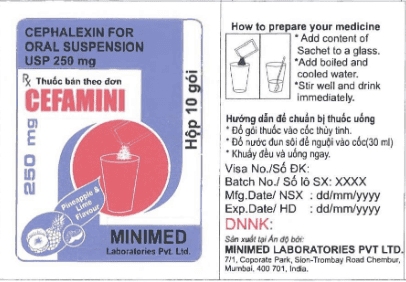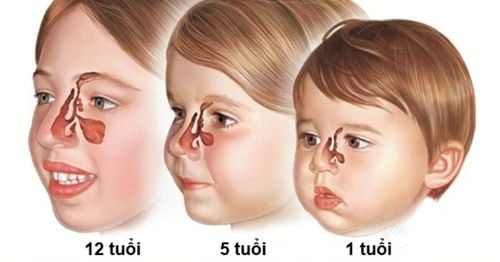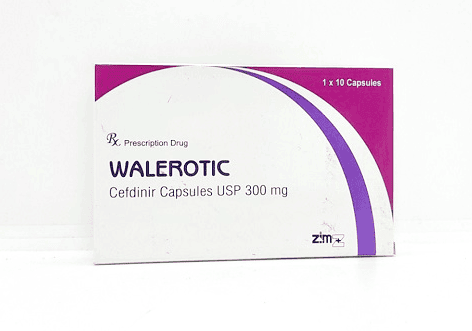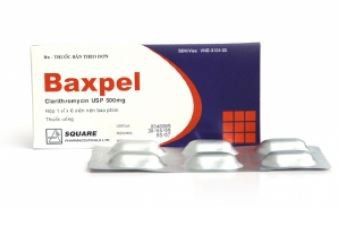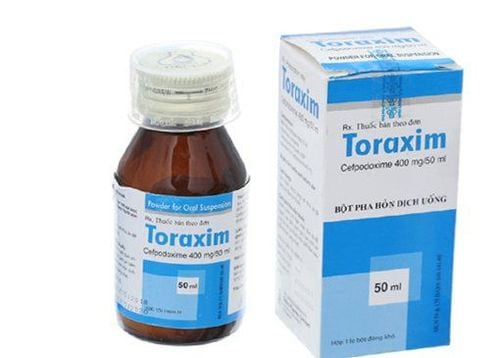This is an automatically translated article.
Using nasal drops will help the patient reduce the discomfort caused by a sore, stuffy nose. However, people with sinusitis need to use nasal drops correctly to ensure the medicine has a good effect and avoid side effects.
1. Know the symptoms of sinusitis
Sinusitis is an inflammation of the respiratory mucosa lining the paranasal sinuses. The cause is due to edema causing increased mucus secretion in the lining of the sinuses due to certain agents causing sinus congestion. If sinusitis is not detected early and is not treated properly, causing the disease to persist for a long time, it is called chronic sinusitis.
There are many causes of sinusitis. The most common are:
Because the patient is infected with viruses, bacteria and damaged hair cells in the lining of the sinuses, causing sinusitis. Allergies: Some allergy-causing factors such as cold weather, pollen, and dusty environments are also the causes that make susceptible sites susceptible to recurrent sinusitis if the above factors are not eliminated. habitat. Anatomy of the nose and sinuses: This is a rare occurrence of abnormalities in the anatomy of the nose and sinuses such as nasal septum deviation, nasal polyps, and hypertrophy of the nasopharynx leading to weak nasal circulation and causing sinusitis. Symptoms of sinusitis:
The first symptom of sinusitis is that the patient can sneeze, runny nose like a common flu infection. Then appear more stuffy and runny nose, the discharge in the nasal discharge can be clear or yellow-green. When sinusitis is severe, the patient may have a fever, cough, heaviness in the face, headaches in the forehead, temples or cheeks, reduced ability to sense odors, or even no smell.

Bệnh viêm xoang gây hắt hơi, sổ mũi
2. Use nasal drops properly for people with sinusitis
People with sinusitis need to use nasal drops correctly. Specifically, patients follow the following steps:
Step 1: Blow your nose to let the nasal secretions out.
There is a common mistake before using sinusitis nasal drops that some people do not know often cover tightly. Both nostrils and then blow hard, causing the stagnant substances in the nasal cavity to be pushed back into the sinuses or openings to the throat. Therefore, to blow your nose properly, you need to cover each nostril, blow hard on the opposite side to drain the stagnation and vice versa.
In case of a blocked nose, a lot of stuffy nose, or a nosebleed, you need to drop a vasoconstrictor to partially clear it first.
Step 2: Aspirate the nose
For young children with posterior sinusitis, sticky pus is difficult to blow, so parents need to suck the child's nose. However, it is not recommended to perform nasal aspiration with young children by mouth because it is very unhygienic, only getting the substance right at the door behind the nostrils.
When performing nasal aspiration, if you suck with a machine, you must use a vacuum with adjustable pressure so as not to suck too hard, too long, causing harm to the nasal mucosa.
Step 3: Drop the nose
When using nasal drops to treat sinusitis, the patient should lie on his back, or sit on his back so that the medicine can enter the nasal cavity, direct the tip of the dropper to the outside of the nose, up. Then, drop the nasal drops drop by drop, should not be more than 5 drops. After instilling nasal drops, the patient gently rubs the nose with his hand so that the medicine can penetrate deeper.
For people with posterior sinusitis, you should lie down when using nasal drops for sinusitis, leave your head off the side of the bed, and tilt your head up to fully direct your nostrils up. After nasal drops, you should not stand up, walk, work immediately, need to sit or lie still for a few minutes so that the nasal drops can enter the entire sinuses.
Besides, people with sinusitis should wash their nose regularly and properly, which will help the patient control the symptoms and improve the disease significantly.
When rinsing the nose, the patient should drop physiological saline into flowing from one nostril to the other nostril. This will help wash out mucus and allergens from inside the nostrils.

Người bệnh cần nhỏ mũi đúng cách
3. Choose nasal drops for sinusitis
Choosing nasal drops for sinusitis is an important issue for people with sinusitis. Currently, the basic types of nasal drops are aimed at vasoconstriction, creating ventilation, ventilation and good drainage.
Naptazolin: 0.1% for adults, older children, 0.05% for young children (not for children under 6 months old). Ephedrine: 3% for adults, older children; 1% for young children. Anti-inflammatory drugs, antiseptic: patients with purulent rhinitis, acute or chronic sinusitis often use vasoconstrictor drugs with antibiotics or corticosteroids. For young children, the drug has an additional 1% - 2% acgyron. Note: People with sinusitis should not self-medicate with antibiotics, concentrated corticosteroids or high concentrations. That will harm the lining of the nose and sinuses. With traditional medicines, patients need to be careful to ensure that there are no fungi, bacteria, allergens that can react or damage nerves and vessels in the nose and sinuses.
Better yet, the patient should see a doctor for detailed instructions on the drugs to use.

Người bệnh nên tuân thủ phác đồ điều trị của bác sĩ
Vinmec International General Hospital examines and treats common nasopharyngitis diseases, head and neck tumors, congenital malformations of the ear, nose and throat area with the most optimal internal-surgical methods for patients, both children and adults. Coming to Vinmec International General Hospital, patients will receive direct, dedicated and professional examination from a team of qualified and experienced medical staff.
Please dial HOTLINE for more information or register for an appointment HERE. Download MyVinmec app to make appointments faster and to manage your bookings easily.




